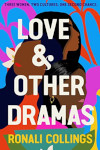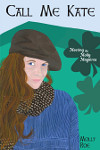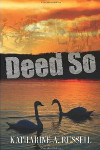Anya Von Bremzen – Mastering The Art Of Soviet Cooking
Posted 13th September 2013
Category: Reviews Genres: 2010s, Domestic, Food, History, Memoir, Political, Social
4 Comments

Rations versus cuisine.
Publisher: Crown (Random House)
Pages: 294 (324 including recipes)
Type: Non-Fiction
Age: Adult
ISBN: 978-0-307-88681-1
First Published: 12th September 2013
Date Reviewed: 7th September 2013
Rating: 4/5
Von Bremzen chronicles the culinary history of Russia from the 1910s to the present day, interspersing it with political and social history as well as her own.
Mastering The Art Of Soviet Cooking is an intriguing book that blends to a smooth mixture memoir, history and, of course, food. Set up as a project between the author and her mother to visit each decade of Russia’s history via a meal, the book soon devolves into an overall look at the way food was used and consumed in the USSR.
There is a lot of general Russian history in the book, and it will ‘work’ best for the reader if they approach it already familiar with the beginnings of the Soviet Union. Whilst Von Bremzen explains a lot of the reasons for various choices and so forth, she does not introduce the initial change itself. Beyond this, the history is very well described and the reader will come away with a good amount of knowledge about the role of food in Russia.
Well described, too, is the food itself. Due to the limits present in writing about meals (in other words you are of course only reading about the food without tasting or picturing it) it may not be as memorable as the rest of the content, but Von Bremzen’s success is necessarily in the way she links food to the regime itself. For example she explains how the regular person ate, and then details what those who said ‘everyone is equal’ ate.
It is hard not to become fond of Von Bremzen’s family. As the author’s mother played a part in the creation of the book, this is whom you are likely to be most fond of, especially as Larissa comes across as the sort of person you wish would grace more books. Von Bremzen’s mother saw the reality in situations at a young age, so in her daughter’s story you get to see both versions of the history – what it looked like and what it was, and you get this from day one rather than in hindsight. Von Bremzen’s childhood antics are fun, but it is undoubtedly Larissa who steals the show.
The recipes described are contained at the back of the book, and due to their placement the not-quite-concluded final narrative chapter feels strangely fine. In any other book the lack of a conclusion would be a negative, but it really doesn’t matter here and just goes to show that history is still in the making. Indeed if Von Bremzen had left it just a few more years, a whole other decade would have had to have been included.
The one potential downside is the writing style. Von Bremzen has chosen an extremely colloquial language that on many occasions can be difficult to understand. (This is separate to her use of Russian words which is of course a completely different matter – and everything is translated.) In some ways the text reads as though it were a casual speech rather than a book. Slang words and phrases are used, such as ‘cheapo’ (‘cheap’ is never used), aka, and ‘egg thingies’.
The writing has the potential to be a drawback, as does the amount of political history if the reader is expecting food all the time, but overall Mastering The Art Of Soviet Cooking is an informative book with a fascinating cast of real characters. The recipes are introduced well with enough prior information on them for anyone intrigued to want to give them a go, and there is a fair amount of humour and personality in the book.
A good introduction to Russian food history, Mastering The Art Of Soviet Cooking is likely to appeal to anyone who likes the idea of a meal and memoir mix.
I received this book for review from Crown Publishers.
Related Books
None yet
John Elder Robison – Raising Cubby
Posted 19th April 2013
Category: Reviews Genres: 2010s, Commentary, Law, Memoir, Political, Social
7 Comments

Inaccessibility has never been so accessible.
Publisher: Crown (Random House)
Pages: 354
Type: Non-Fiction
Age: Adult
ISBN: 978-0-307-88484-8
First Published: 15th January 2013
Date Reviewed: 10th April 2013
Rating: 5/5
Robison recounts his time as a parent with Asperger’s, bringing up a child from birth to the teenage years. Involving stories of entrepreneurship, life when society doesn’t always understand you, and court cases when people make mountains out of molehills, Robison’s book is about himself as much as it is his son’s progression and the possibility that Cubby (Jack) might have Asperger’s, too.
Raising Cubby is a wonderful book that is successful as much for what it doesn’t say than for what it does. Robison takes the approach of organising his book by topic rather than by life stage, meaning that you read a lot more about Jack than you might have if the story had been completely linear. And whilst Robison has much to impart about Autism, he does it in a way that invites the reader into the fold. The book seems fresh, and it is, because you have the first-hand experience rather than an account by someone who knows someone with a condition, as is so often the case.
Robison balances serious statements with a lot of easy humour. His book is in the vein of that new phrase, ‘literary non-fiction’, where the story flows as well as any novel. It is an account, but it feels as though he is talking directly to you at times, and his humour invites a certain intimacy – you will finish this book feeling as though you’ve known the people in it for years.
This leads us onto the next point, because this affability and invitation seems at odds with what Robison describes of himself and of Autism in general. Taken at face value, as he says, those on the autistic spectrum can seem rude and anti-social. So the accessibility of his book knocks that notion out of the water. Which is brilliant, really, as it further backs up the truth of the matter, which, as Robison says, is that those on the spectrum wish to have friends, but happen to be oblivious to the way they come across to others.
The last point in the previous paragraph does not in turn relate to the writing in the book, however. Robison speaks naturally and has a good command of language, you would expect an English degree to be amongst his accolades. This in itself may surprise some readers, and by itself makes the book stand out as one that would be an invaluable source to schools and any organisations that struggle to understand those on the spectrum. But in addition, Robison writes honestly, he never censors himself – in other words he includes decisions he’s made that might sound strange to many, without any hint of apology or explanation. He clarifies the first few times, so that you will be able to tell where his Asperger’s has played a part in decisions, but otherwise there is nothing. Therefore when things sound odd there are no excuses – this is Robison, this is an example of Asperger’s, and as a reader you just get used to it. Robison explains the logic to some decisions so that you come to understand his mindset, but the overall approach means that not only will the uninformed reader come away knowing a lot more about Autism than they would any book by unaffected ‘experts’ but readers with autism will likely be able to relate to it, too, especially since there is no time for patronisation or misplaced sympathy. Raising Cubby is very much a book for anyone.
Due to the inclination for obsessive interests, readers who love the following topics will find in this book fodder for them: the upkeep and alteration of musical instruments, repairing and refurbishing cars, building homes, and chemistry. There is enough information about trading card games to appeal to those who may have had trouble leaving them behind with childhood. It’s not that the book is lengthy with masses of information, it’s the way that information is incorporated throughout. Robison is a geek, and the reader can rest assured that they can join him without any of the eye-rolling or sighs that often accompany responses when an attempt is made to discuss a beloved subject in person.
…the Commonwealth of Massachusetts had also charged him with one count of “possessing explosives with the intent to harm people or property”. I guess that was their backstop – if they couldn’t prove he harmed people or destroyed property, they wanted to prove he meant to.
The book is striking for many reasons, but one reason is far removed from the others. As Cubby, a child genius with no understanding for how others would view him, experimented with chemistry, the law inevitably arrived at the door. This episode gives Robison the opportunity to call into question the vast chasm that is rules made for the typical person coming up against people for whom they cannot work. Robison shows how naivety and disability are exploited for gain by others, and how the rules need to be changed. The account of Cubby’s trial inevitably calls to mind the case of Gary Mackinnon, a British man with Autism who hacked into the Pentagon computers to find evidence of aliens. Robison’s account may not refer to it, but the two events run neatly in line. Things are not black and white, especially when disability is involved.
Robison may have an epilogue that hopes for changes in the court system, further progression for acceptance, and education in society of those who do not match the expectations of society, but the strength of his book surely lies most in the overall approach and content. Raising Cubby is a brilliant book for general reading, but there is no doubt that the best future for it would be in the consumption by those who deal with people on the spectrum on a constant basis and who as yet lack the information necessary to both help their charges excel, and excel as teachers themselves.
I received this book for review from Crown Publishers.
Related Books
None yet
Becky Aikman – Saturday Night Widows
Posted 8th February 2013
Category: Reviews Genres: 2010s, Domestic, Memoir, Science, Social, Spiritual
4 Comments

Life after death. A great life.
Publisher: Crown (Random House)
Pages: 334
Type: Non-Fiction
Age: Adult
ISBN: 978-0-307-59043-5
First Published: 22nd January 2013
Date Reviewed: 31st January 2013
Rating: 5/5
Aikman tells the story of life as a widow; first being dumped from the stereotypical support group, and then her quest to create a new sort of group – one focused on remaking lives and finding oneself in new experiences. She gathers five women of similar ages together and each month for a year they try something new – a spa, a cooking lesson, and lastly a grand holiday. Along the way they learn to live with their new lives and to love again. Interspersed with this main story are those of the days each woman lost her husband, Aikman’s discovery of new love, and information about research into grief.
Saturday Night Widows is a fantastic book with fantastic characters. It’s safe to say that if this were fiction, these women would be on book-lover’s lists everywhere and this is testament to how wonderful they are and how well Aikman writes. Rather than focusing on loss and grief, Aikman looks at the positives, the second chance at life and the chance to remake oneself – whilst grief is included, this is a book about happiness and triumph.
From what Aikman says, it appears that apart from wanting to simply conduct an experiment, Aikman may have envisaged a book from the very start; that is perhaps the reason why the memoir is insightful, helpful for those going through grief, and just simply a good book in general.
One of the most important themes of the book is the way both outsiders and the women themselves relate to widowhood and death, for example when Aikman wished to hire staff at an art museum to conduct a tour about remaking lives, the manager phoned her with ideas for art focusing on death. Aikman details how people can be overly helpful or say the wrong things, whether in innocence or because they feel the time for mourning should be over, and she explains (often in the context of her friends) why these things are bad.
Important too are the issues with blending families – two newly-single parents coming together when children are in the mix – which includes Aikman’s own issues with being a stepmother to a girl who didn’t want a stepmother. Whilst the women in the group are of similar ages their children are not, and this allows for a broad assessment of complications, and, of course, achievements.
And considering the ages of the women – the youngest 39, the oldest 57 – there was no easy acceptance of death as there might have been in old-age. With a variety of reasons for the deaths, including sudden death and suicide, the women present a detailed look at grieving and coping.
Dawn didn’t know anything about lotus blossoms when he gave her the photograph six months before he died. She asked him why, of all the glorious sights in the wild, he had chosen this image of a lotus, rooted in an inky swamp, for her. “It is because a lotus blossom will grow and perfume and flower,” he said, “even in the muck”.
Everyone made that same contented sound that Dawn had uttered before. We got it, all right. All of us – Denise, Dawn, Marcia, Lesley, Tara, me – we were blooming in the muck.
Wonderful is the way Aikman presents the women, how they leap off the pages, as colourful and positive in print as they’ve become in real-life. The presentation to the reader is a remaking in its own way as you grow to love them and know them rather well.
The one thing that might divide readers is the focus on experiments. There is quite a lot of exploration into scientific research and trials that can at times seem rather careless (the trials themselves that is, rather than Aikman’s retelling). Aikman details the women as though they are an experiment and this can make them read as children sometimes rather than friends. True, the group was an experiment of sorts, and Aikman, a reporter by trade, speaks of how she took her tape recorder to meetings and lead them in a way, but it can subtract from the friendliness and healing aspects of it all. One could say that to Aikman these women were subjects, but as you read on it is clear she is one of them just as much as any other. Yet all this is understandable because of Aikman’s job as a reporter, and, it must be said, it’s also quite a boon to the book because of the unique angle it takes and the information it offers to anyone wishing to look into it as a subject.
A great deal of credit must go to Aikman’s writing style, the way she mixes accounts of the monthly meetings with memories of the past and what is happening in the present. The book would likely not suffer if it were just focused on the meetings, because it is a strong thread as it is, but these three aspects and time periods mean that the book is so varied and detailed (even without straying from the main theme) that it is difficult not to want to keep reading. There is never a dull moment where nothing happens. If this is a prime example of Aikman’s work then the newspaper she worked at has surely lost a fabulous employee.
Saturday Night Widows has a vast appeal. Undoubtedly a book for women who have also lost their husbands, the work has a general interest aspect to it as well as being a likely candidate for a book about women that would interest a male audience, too. Filled with memorable people who you will find yourself continuing to root for beyond the last page, the book is an example of looking adversity in the eye without suggesting that grief is anything but awful to get away from. Sad, happy, contemplative, funny, and sentimental without dwelling too long (indeed this is the group’s aim), and written by a true talent with plenty of experience in the craft, Saturday Night Widows is one to look out for on any night of the week.
I received this book for review from Crown Publishers.
Related Books
None yet.
The Hippie – Snowflake Obsidian
Posted 25th May 2011
Category: Reviews Genres: 2010s, Angst, Memoir
Comments Off on The Hippie – Snowflake Obsidian
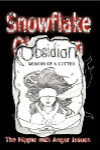
Learning to love yourself and others can sometimes be a difficult process.
Publisher: iUniverse (self-published)
Pages: 252
Type: Non-Fiction
Age: Young Adult
ISBN: 978-1-4502-6554-6
First Published: 2010
Date Reviewed: 20th May 2011
Rating: 3/5
Willow, aged 19, has always been a bit different but she has a good group of friends. Not so good is her relationship with her father and her life with her family in general. When she meets River she sees in him someone she can truly love but River has his own issues. As Willow starts to see the flaws in her world she becomes bogged down by it and must find a way out.
Written like a novel, Snowflake Obsidian, provides an important message. But it is not narrated in the way you might expect from a book that one would describe as important. It is not a literary masterpiece, but then it isn’t supposed to be. The writing style is such that sometimes there is extreme colloquialism, and there are times when you feel yourself questioning the grammar. However the grammar does illustrate the mindset of the person in question; although the memoir is a story of the past, and of self-harm, The Hippie tells her story with as much feeling as though she were going through it at the time of writing. The writing style would appeal to the target audience, and considering The Hippie is looking to help young people rather than win over a bunch of critics (I realise that my writing this review is thereby somewhat funny, but this book will go nowhere without being spoken about) it is okay.
Unfortunately, style aside, there are a lot of errors that detract from the writing because at times one must read over a sentence a few times to work out what it should really say. This can make reading it frustrating in a way it should not be.
Because so much of The Hippie’s focus is on her love life, quite understandably given her age and how awful heartache is in general, it can be easy at times to overlook the other problems and wonder why she let herself become depressed. Personal experience of her issues would definitely help – again the targeted reader of the book would likely share at least one of her issues – but reminding yourself of the nature of them would suffice. The way in which the author describes her relationship with her father might make a reader wonder what the problem is until you put yourself in her shoes. That the decent into depression seems rather sudden is actually incredibly understandable.
The Hippie makes good use of the advice given to her. While one of the elements, a monkey being obsessed with trying to get a peanut, can become repetitive, after a while you can see why it is appropriate and indeed you might be able to apply it to your own life.
One thing that I would say most people would struggle with is why The Hippie stays with her destructive boyfriend. It seems obvious that she should leave him, but in time she does address this. Indeed a lot of her thoughts could be applied to many people’s opinions of their partners, the most prominent being that you can’t change someone and that wanting to change them reflects the unhappiness you have in yourself.
Due to the subject one can’t really comment on whether it is a good book in the usual sense, but rather if it fulfills it’s purpose. On that this reviewer would say that it does but it could use some editing in order to fulfill it’s purpose to perfection.
I received this book for review from the author thanks to Pump Up Your Book.
Related Books
Lisa See – On Gold Mountain
Posted 3rd June 2010
Category: Reviews Genres: 1990s, Memoir, Political, Social
1 Comment
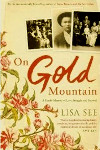
In the new world, known in 1800’s China as the Gold Mountain, fortunes were made by those whose lives were otherwise destined to be laborious. One of those lives was Fong See’s and he changed the make-up and the fortunes of his family forever.
Publisher: Bloomsbury
Pages: 376
Type: Non-Fiction
Age: Adult
ISBN: 978-0-7475-9907-4
First Published: 1995
Date Reviewed: 10th May 2010
Rating: 5/5
Lisa See, author of the later best-selling Snow Flower And The Secret Fan, details the business ventures and lives of her paternal family from the very first venture to America of her great-great-grandfather to the present day.
In 1867, Fong Dun Shung left his family in China to seek his fortunes in America. He soon brought his fourth son, Fong See, over to help him but ended up living out his later years in his home village. Fong See, on the other hand, lived to prosper in the United States, setting up an underwear company and marrying an American woman. The business changed to become an antique supplier. Fong See’s children learned perhaps more than he the injustice in the world, yet managed to be successful in their own right. As a memoir the book focuses on one subject in particular – business success in America – with information (a great amount, actually) about other aspects of family life. Amidst this is the story of the persecution of Chinese Americans and the many laws to dissuade them from doing practically anything other than stay at home.
On Gold Mountain reads like a work of fiction. The story is fascinating by itself but Lisa See (the author, whom I will refer to by first name from now on to avoid any confusion) has made it even better. A few of the dialogues are completely made up, as the amount of detail she goes into just isn’t possible to gather through sources, but instead of detracting from its success as you may think, this adds to the engrossing quality of the book. Lisa hasn’t just doled out dates and factual information about a story that, let’s face it, isn’t going to affect anyone but her own relatives, she’s made it compelling for the casual reader too. She’s used her skills as a writer and plenty of artistic license to create a work that her great-aunt Sissee, the person who proposed the idea of a memoir, would surely approve of.
Talking of Sissee, let’s get straight down to another note I made while reading this book – I, a reader in Britain with only outsider knowledge of Chinese culture, feel as though I’m part of the family. The book isn’t written in a way that entices the reader like this, and of course because the characters are real people they never address the audience, you’re just a fly-on-the-wall – but after all the information I’ve been given and after all the emotions I’ve been made to feel for these people I know I could sit down to lunch with them as boldly as if I’d been invited as kin. I was excited by Fong See and Ticie’s family and very upset as each passed away; even if I knew it was going to happen, I hoped that it wouldn’t. The family is accessible. The rogues of the story are likeable, even as they cause family disputes. No one is condemned, though there are good reasons why they could and perhaps should be. Everyone is described in detail enough that their unique personalities are shown – in the case of the siblings you have Ming and Ray – playboys and business-orientated, Bennie who is loyal, Eddy who wants to do his own thing, and Sissee who just wants freedom. It makes you think, should I be writing my own family’s history before it’s forgotten? No family history is plain and boring, and Lisa, with her incredible yet mostly family-centric story (no one changed the world, for example) proves that you don’t have to be of royal blood to have a good tale to tell.
Lisa makes her great-grandfather, Fong See, incredibly readable. Whether or not some of the events are fabricated to some extent the reader can really move into step with him and become absorbed in the story. For my part I must say that I’ve never felt such a pull from a book before, I was living as an invisible follower of Fong See and, his roguish elements included, I can see why Ticie, Lisa’s great-grandmother, was so drawn to him.
The characters focused on most are Fong See, Ticie, and their children. This creates two points of thought in my mind. The first is that depending on the individual preference of the reader for country or city living, either the first or second half of the book will be more intriguing. As America, at the time, was just forming, there are plenty of descriptions of farmland to whet the appetite of a person who prefers peace, but then as the cities expand there is little greenery and many factories so the detail is in the creation of material goods. Fong See and his first family’s story (he got around a bit) straddle both, but while Fong See and Ticie are together the emphasis is more towards the country. The second thought is that after Fong See and Ticie part ways the story is less engrossing, this can’t be helped of course, as it’s fact, but the interest garnered from the reader because of the story of a mixed-race family in troubled times, the adaptation to another’s culture, and the building up of a business, is lessened immediately following it. There is more to be had in the stories of the children for their number but as American laws are relaxed and life becomes more like our own today the narrative appears to slow down – however it’s not so much the story as the reader’s desire to continue reading. The problem is that the “action” comes in those first years and then of course there is no climax because the story can never end completely because this is the tale of a family still going today.
Lisa writes her account of Fong See crossing to America and then and only then gives all the other reported accounts that she has discovered. She ends the section brilliantly with a little wit, saying that we should probably trust the age and journey times Fong See gave to newspapers and customers. She wants the version she provided first – detailed and probably, by her own admissions of the information, dreamt up by relatives – to be true, but will give us the other accounts anyway. That she uses wit may seem self-absorbing, but the way she words it makes it akin to the usual basic mysteries every family has – as more generations are born and previous ones disappear, information gets blurry.
In relation to this, the wit in the book, I would like to put forward a quote:
Fortunately, the Pruetts were Pennsylvania Dutch and not given to concerns over worldly possessions.
While the initial opinion may be that Lisa is on a moral high ground flaunting her superior ancestry, isn’t it that she’s injecting humour into a relatively arduous subject? Both possibilities are equally possible, but there’s no doubt it’s the latter, the humour.
Irony – the information Lisa provides on reclaimed land. The Chinese reclaimed land from marshes and bogs when no one else would because it was dirty and infested but they were not granted any of that new land because of the Alien Land Act. Aliens? Surely everyone who wasn’t Native American was alien – but the Caucasians didn’t think of that because they thought they were superior. The people who put the act in motion, the invaders, likely British-born or if not at least European, were not natives of the land themselves. It’s disgusting when you think about it. Looking back on one’s country’s ancestors is always a cause for distress at some point, no matter where you’re from, but to read a true account of how your people were so self-righteous is most difficult. In this reader’s humble opinion, yes the Chinese may have been cruel themselves at the time with their foot-binding and treating women as slaves, but it was the Caucasians who were the true aliens, for their actions towards other races rendered them inhuman.
Although the Chinese saw America as a gold mine there was nothing gold about the few dollars the first workers brought home. In retelling the See family story Lisa describes the creation of the original railroads – the meagre pay, the poor living conditions, the perils of the parties using dynamite to blow holes in the hills – and the many shop keepers who struggled to earn their keep. The lucky ones, who had the ideas and ambition to start their own businesses, like Fong See, were those who caused the phrase “gold mountain” to stay in use, but they were few and far between; and, to determine another aspect of this school of thought: as Fong See remarks, one could be a rich man in China from the money they made in America, but in the west they were still poor. What the Chinese didn’t realise was the extent of the difference between quality of life and cost of living. To be truly rich, one had to return to China, making their time in America simply a long sabbatical.
In her fiction work, Lisa uses words brilliantly. Because of the nature of this book there are few incidences for poetic language but they do exist, and they exist in the form of those thoughts Lisa’s family members have. Perhaps this was part of the reason Lisa created those thoughts, to give her a chance to write with more flare and more of the style she employs in her novels.
In early April of 1877, Luscinda Pruett lay dying. Her mind wandered over her life in Oregon, her children, her husband, and God, whom she knew she’d be meeting soon. She’d had a fever for weeks, and now the pneumonia had grabbed hold of her body and wouldn’t let go. Not that it wasn’t peaceful lying here, as Mrs. Peterson sponged her forehead with cool cloths and the Reverend Peterson gave a discourse on the second commission of Christ to his Apostles. Or was he reading from the tenth chapter of First Corinthians? Maybe that wasn’t it at all. She knew she’d heard him give those sermons before, at their Sunday meetings. No matter.
The above is quite possibly exactly what Luscinda Pruett was thinking, safe as her thoughts were from the limitations of a strict outside world. But more to the point Lisa has provided her great-great-grandmother, who has a minor role to play in her story, with a grand final performance.
Lisa’s descriptions are magnificent, again in this you can see the novelist in her trying to climb out of the closet into which she’s stowed it away and blending its fiction skills with fact:
For Choey Lon, China City was a magical place where the fragrant smell of incense wafted from a temple and gentle breezes passed through wind chimes hanging before shops.
In writing On Gold Mountain Lisa fulfilled her objective, to honour her aunt Sissee’s request that their family story be told, and brought into being a commercially available account of a minority living amongst a majority, to a world where it’s likely not many of these events have been written about in such a way and with such filial passion. The stress may be on her family but there is enough material to take away and add to any knowledge you might have had of the period previously.
On Gold Mountain is a lovingly rendered story of adventure, love, and above all triumph. And I’m afraid you just have to love an author who uses the word “shenanigans”.












